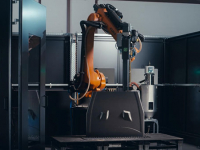
January 17, 2023
Cadence has been in the simulation business for more than 30 years. In electronics design, it's practically a household name. Its 2021 acquisition of PointWise marks another milestone in its expansion into new territories. The purchase “further broadens its system analysis portfolio, complementing the recently acquired NUMECA CFD technology. Together, these acquisitions will enable advanced CFD solutions where accuracy, reliability, predictability and performance are paramount for high-fidelity characterization of fluids, such as air flowing over an airplane,” according to the company's announcement.
In this episode of Leadership Profile, a sponsored podcast series, John Chawner, former cofounder and President of PointWise, current Group Director of Product Management at Cadence, discusses the evolution of CFD.
“With printed circuit boards and enclosures, you need to cool these electronics. And the packaging gets smaller and smaller. As you start cooling, you start moving air. That's CFD,” he noted. “CFD is a natural adjacency to what Cadence has been doing ... We're able to bring to the market targeted CFD applications that look at specific types of problems.”
The name Fluid Dynamics may mislead some to think of the technology as relevant only to liquid-related phenomenons, but Chawner points out CFD is ubiquitous, applicable to a wider range of aerodynamic issues, from how you throw a curveball in baseball to soccer kicks. “Three America's Cup [boat racing] teams are using our technology to refine their designs and hydrofoils. In Automotive, Cadence is an official technology partner of McClaren Formula One team,” he said.
CFD has evolved over time. With the increase in processing power, CFD is now reaching new heights. Chawner said, “In the mid 1980s, I spent an entire year and a lot of supercomputer time running 2D simulations. This is now probably a senior-level undergraduate students homework problem.”
He anticipates this evolution to continue as the technology gets simpler, easier, and more affordable. “The high-level tools are going to mature and come down and be implemented in software products, allowing people to compute simulations faster, get more accurate answers, and perform simulations they couldn't do before,” he said. “We want to get the technology out to the laypersons so that they can actually use it for engineering simulation.”
For more, listen to the podcast.
Latest News








